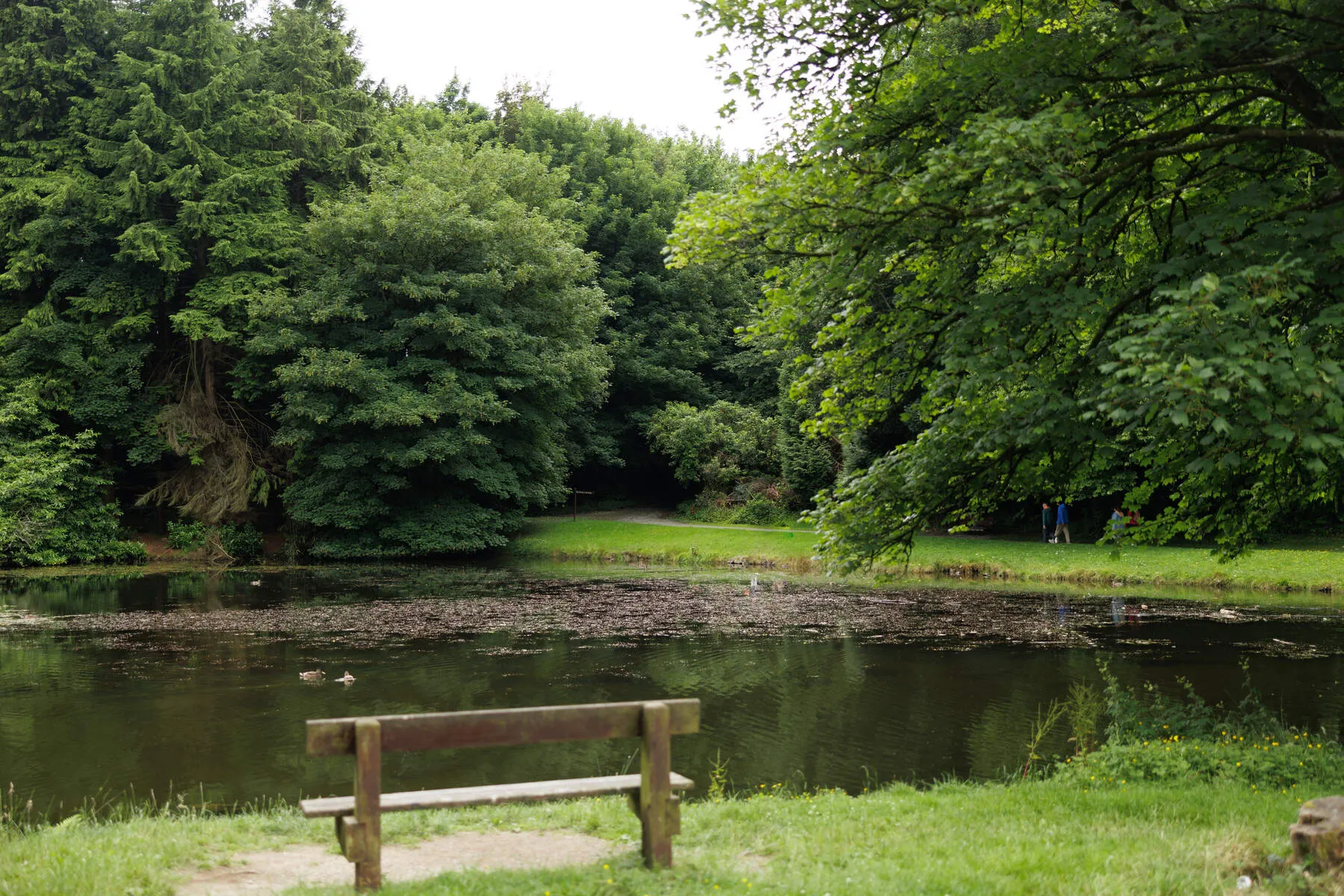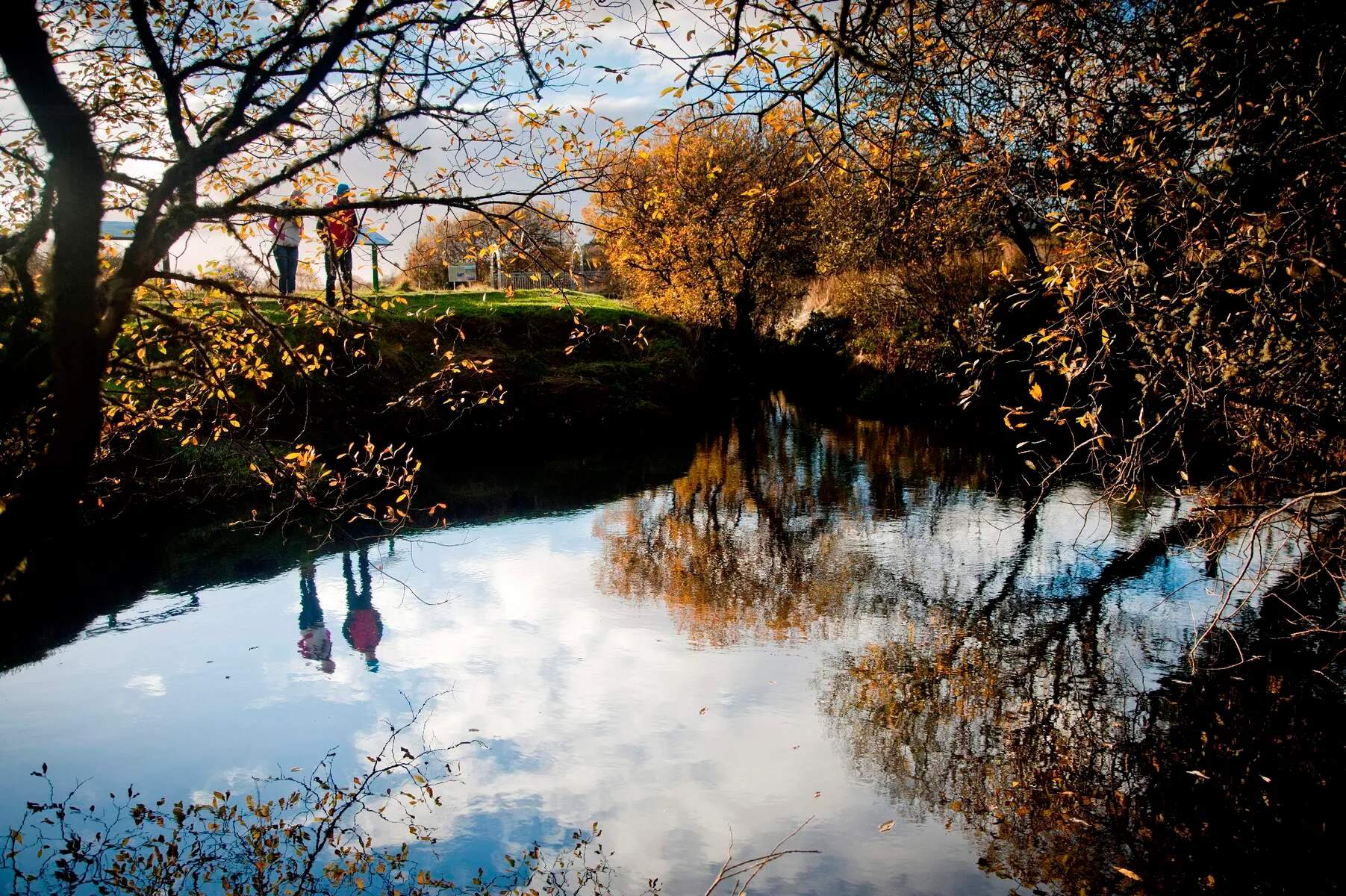Tucked away in the rolling mountains of East Cavan lies the charming town of Bailieborough. The town is nestled under the watchful eye of Lough-an-Leagh mountain, an area of outstanding natural beauty that offers breathtaking views of up to 14 counties on a clear day. The town features the beautifully restored 17th Century Wesleyan Chapel Arts and Cultural Centre. It's a great place to stay to go on hikes like the Bailieborough Castle Forst Trail. The town's central location makes it an ideal base for exploring County Cavan and the surrounding region.
Jump to section:
Things to See and Do
Bailieborough Castle Forest Trail
Trace the echoes of the past on a walk through the former demesne of Bailieborough Castle, with 6.5km and 3.5km loop options. Enjoy the serenity of the lake and surrounding grounds, and encounter historical landmarks like the Rebel Hill memorial and the castle ruins, all nestled within a tranquil forest setting.
Lough an Leagh Mountain Walk
Hike the 7km Lough an Leagh Mountain Walk, nestled between Kingscourt and Bailieborough. On a clear day, savor breathtaking panoramic views encompassing up to 13 counties, taking in landmarks such as Cuilcagh Mountain and the West Cavan wind turbines.

Kayaking to Clough Oughter Castle with Cavan Adventure Centre
Paddle across the tranquil waters of Lough Oughter to the captivating Clough Oughter Castle, a 12th-century Norman stronghold perched on a tiny island. Immerse yourself in the breathtaking scenery and serene atmosphere.
Bailieborough Courthouse
Discover the history of this landmark, which is evidence of the town's legal past, and now a community center.

Dun an Rí Forest Park Walks
Venture into the scenic Dun an Rí Forest Park near Bailieborough, offering a network of walking trails suitable for various fitness levels. Enjoy the beautiful surroundings and captivating views.

Exploring The Shannon Pot
Witness the legendary source of the River Shannon, a natural spring known as The Shannon Pot. This captivating pool, located along the Cavan Way, is steeped in history and natural beauty.
Brú na Bóinne Archaeological Site
Explore the ancient wonders of Brú na Bóinne near Bailieborough, a historic site featuring Neolithic passage tombs and artifacts. Uncover the mysteries of Ireland's distant past.
Lough Crew Historic Site
Venture to Lough Crew, a significant archaeological site near Bailieborough, and explore ancient passage tombs, cairns, and other historical relics that offer a fascinating glimpse into Ireland's heritage.
Lough an Lae Viewpoint
Take in the sweeping panoramic views of Lough an Lae from this scenic viewpoint. The beautiful surrounding landscape makes it a perfect spot to pause and appreciate nature.
Getting There
By Car:
- From Dublin: Take the M3 motorway via Kells or the M1 motorway northbound towards Navan, exiting at Junction 11 for the N3. Continue on this road until you reach Bailieborough, approximately a 2-hour drive.
- From Belfast: Use the M1 southbound towards Dundalk, then follow signs to the N2 and switch to the N3 heading west into Cavan County. Continue on the N3 until reaching Bailieborough, around a 4-hour drive.
- From Cavan: Take regional road R165 to reach Bailieborough.
- From Dundalk: Take regional road R178 to reach Bailieborough.
- Parking: In Bailieborough, there are several parking options including public car parks near the town center and along main roads.
By Public Transport:
- Bus Services: Bus Éireann provides regular services connecting major towns in Cavan to Dublin. From Dublin, take a bus heading towards Cavan or Belturbet (route 108), then transfer at Belturbet for Bailieborough. Alternatively, route 166 provides service from Cavan and Dundalk.
- Train Services: Travel by train from Dublin Heuston to Cavan, then switch to a local Bus Éireann service to reach Bailieborough.
Local Transportation:
- Within Bailieborough, consider walking or cycling as the town center is compact. For longer distances within the county, local bus services (such as routes 108 and 166) are available, connecting various towns and villages. Taxi services are also available for hire.
Events & Festivals 2025
There are currently no events listed. If you would like to add an event, please contact us.
History
Bailieborough's origins date back to medieval times when it was part of the ancient kingdom of Breifne, a Gaelic territory that played a significant role in Irish history. The area saw numerous conflicts as power dynamics shifted between local chieftains and invading forces. In the late twelfth century, Norman influences began to seep into East Breifne, leaving behind remnants of motte and bailey fortifications like Castlerahan and Clogh Oughter Castle.
The 17th century marked a pivotal chapter in Bailieborough's history with the Plantation of Ulster. English and Scottish settlers were introduced to the region, altering its demographic and cultural landscape. William Bailie, a Scottish planter, was granted 1000 acres of land in Toneregie in 1610 and constructed a castle, known as the Manor of Bailieburrow, which became the center of the town's early development.
The O'Reilly family, descendants of Breifne's ruling dynasty, played a crucial role in shaping the region's history. Their influence extended into the Plantation era and beyond, with many members actively involved in local governance and resistance efforts. Notable figures like Edward Saunderson, founder of the Ulster Unionist Council, and Fargal O'Reilly, Roman Catholic prelate and Bishop of Kilmore, left their mark on the area.
The 19th century brought significant challenges to Bailieborough, including the Great Famine, which had a devastating impact on the town's population. The famine led to widespread hardship and emigration, profoundly affecting local communities and economies. This era also saw the rise of nationalist movements, with Bailieborough residents participating in events like the 1798 Rebellion against British rule.
The town's history is also marked by its connections to various military units, including the Bailieborow Volunteers and the Ballyborough Infantry. These units played a significant role in shaping the town's identity and contributing to its rich military heritage. The Corleck Head, a remarkably preserved stone sphere from the early Iron Age, is one of the oldest and most fascinating artifacts to originate from the Bailieborough area.